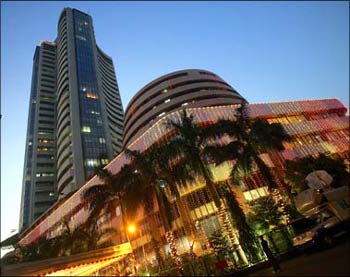 | « Back to article | Print this article |
Markets can give 14% returns in CY13
The year 2012 had two halves. Calendar year 2012 started off on extreme pessimism, driven by a policy log-jam, high interest rates and sticky inflation. In the second half, we saw the government unleash a slew of reforms.
Importantly, the ruling UPA took the risk of alienating one of the allies to push through reforms. These which led to a significant improvement in market sentiments resulting in a healthy year-to-date return of above 25 per cent. Overall, 2012 proved a challenging year with positive consequences.
As we carry forward the positive bias towards equity markets, backed by reforms and the rate cycle, we see next year is the fair share of challenges on the domestic and global fronts. On the domestic front, implementation of policy decisions and execution are key risks.
The author is co-chief investment officer - equity, Birla Sun Life Asset Management Company.
Markets can give 14% returns in CY13
The key factor that has led to deceleration in gross domestic product (GDP) growth from eight per cent has been the collapse of investment growth. According to CMIE data, almost Rs 9 lakh crore worth of investment projects have been stalled due to reasons such as environmental and regulatory clearances, land acquisition, etc.
The recent development of setting up of a National Investment Board might help expedite decision making and clear the logjam reviving the investment cycle and overall economic growth. As the country heads towards general elections, a slew of populist measures cannot be ruled out.
In that regard, the Union budget will be a crucial event to watch out for, to understand how the government achieves fiscal consolidation and addresses growth concerns and political compulsions.
Click NEXT to read more...
Markets can give 14% returns in CY13
Globally, resolution of the US fiscal cliff remains the near-term concern. The grim situation in the Euro zone and pick-up in Chinese economic growth will also play an important role.
In the near term, considering the government has started taking action on policy and reforms are underway, market sentiment should remain positive. Rate-cuts in the early part of next year should also help interest rate sensitives and cyclical stocks. Overall, we expect the market to continue the positive bias till the budget.
The concerns on the Indian economy over the last few years led to a change in market fabric. As the Indian market got clouded by uncertainty, investors flocked to defensives, avoiding cyclicals. This led to a bipolar market, where quality and defensive stocks traded at a premium while cyclicals traded at dirt-cheap valuations.
Click NEXT to read more...
Markets can give 14% returns in CY13
In CY13, we expect cyclical recovery to begin and this polarisation might narrow. As the inflation improves and we see interest rates coming off, it can help sectors like banking and finance, auto, capital goods to outperform and oil & gas and consumer goods sectors to lag.
We expect next year to be positive for the stock market. The upside for the market will predominantly be driven by earnings growth.
The earnings downgrade cycle witnessed last year seems to have troughed, thus limiting the downside risk to earnings. Next year could see a gradual improvement in GDP growth to 6-6.2 per cent range.
Click NEXT to read more...
Markets can give 14% returns in CY13
With six per cent inflation (13-14 per cent nominal growth) and around 1.5 per cent dividend yield, the market can deliver 13-14 per cent returns without any private equity expansion.
Currently, the market is trading around historical average one-year forward price-earnings multiple of 14.5.
As reforms and a favourable rate cycle kick in, we could see further improvements in earnings growth and market re-rating.





